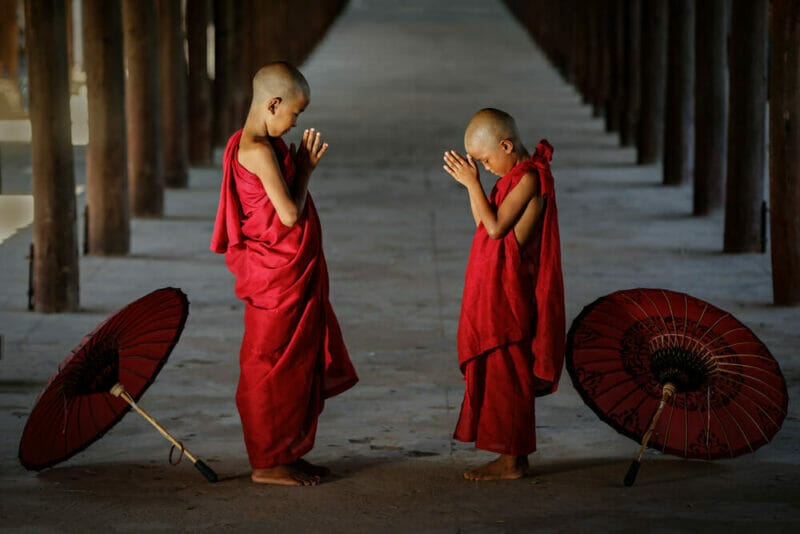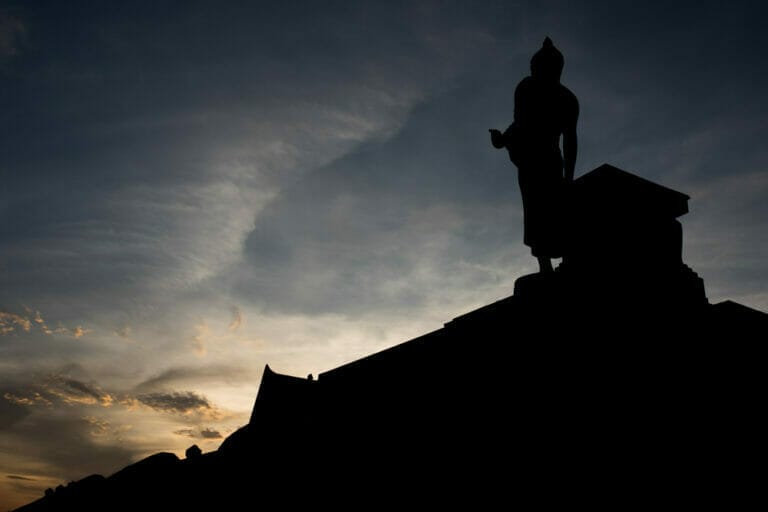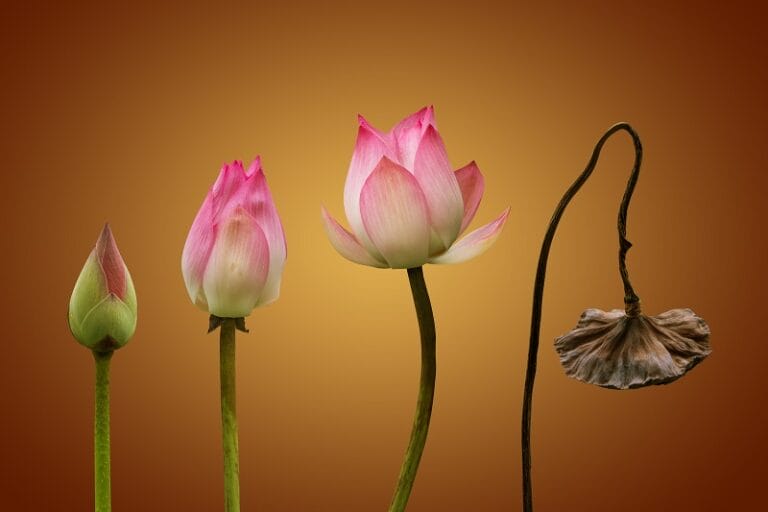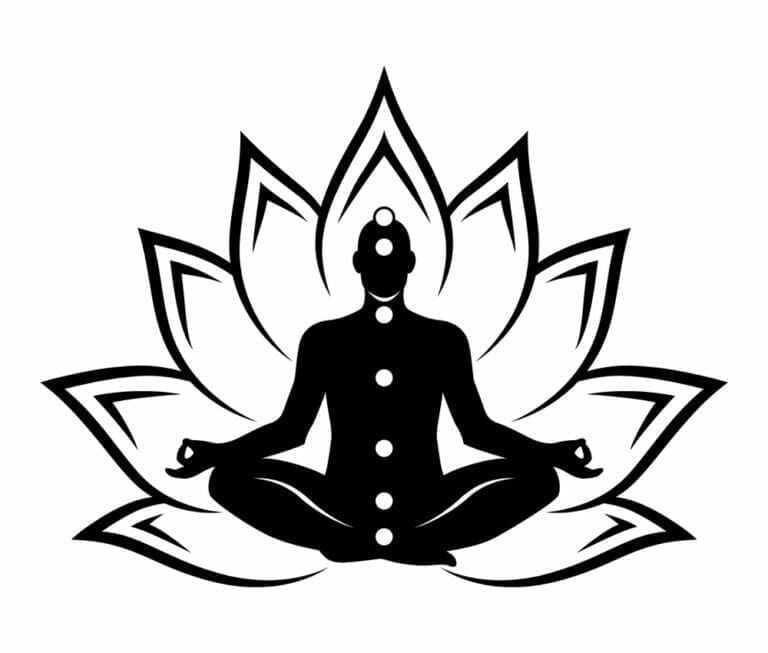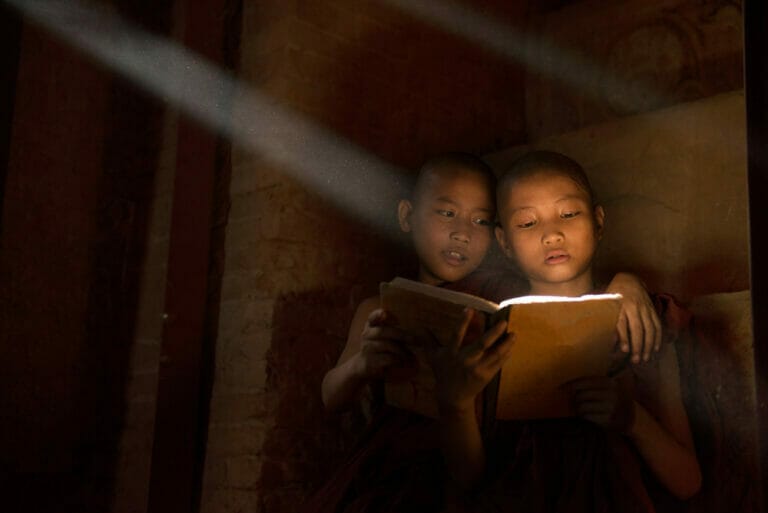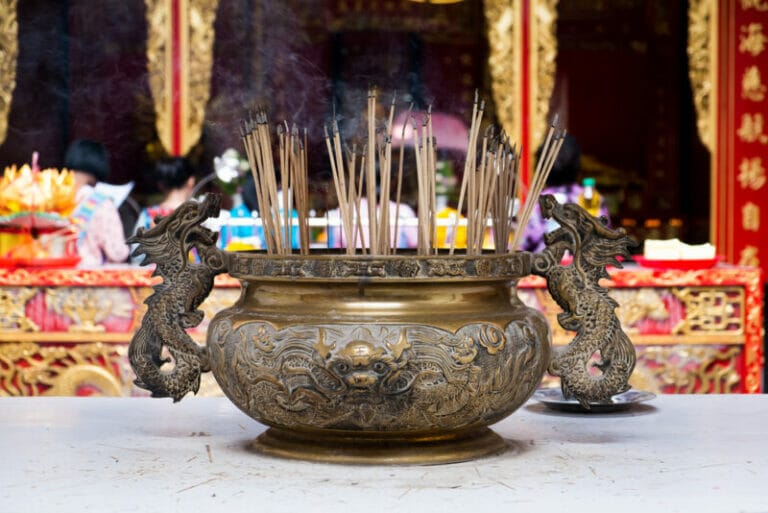How to Greet a Buddhist Monk? 8 Different Greeting Forms Discussed
What is the best way to greet a Buddhist monk? How should you act around one? These are all very common questions that people have about Buddhist monks. It’s easy to feel anxious and uncertain when you’re not sure what to do in this situation, but some simple guidelines can help.
For instance, the standard way of greeting a Buddhist monk is to bring your hands close together to the chest, bow down, and say Hello or any other greeting.
That’s not all, by the way. There are certain Greeting Forms that I would like to address while meeting a monk in a Buddhist temple on a particular day.
Let’s start with the obvious first:
How Do You Greet a Buddhist Monk the Easy Way?
Bring Your Hands Close and Bow
During your meeting with a Tibetan Buddhist monk, you should bring your hands close to your chest and bow a little.
Say the Greetings
You can then greet him by saying “Tashi Deley” which is comparable to saying “hello” in English. These two words are used to express good wishes in the same way that “Salam” is used in the Muslim faith and “Namaskar” in Hinduism.
Observe a Pause
Right after saying the words, observe a small pause while staying in the bow position and wait for the monk to respond to you. Usually, the monks will just nod their heads and that should be considered a response to your greeting.
Honoring a Buddhist Monk with Greetings
To honor a Buddhist monk, you can also say “Namo Buddhaya” which means “I bow before the Buddha”. Those who follow Mahayana Buddhism, however, might prefer to say “Namo Amitabha” (“I bow before the Amitabha”).
Also, it will help show your gratitude and respect for Buddhism if you address him or her as “Bhante” which translates into English as lord or venerable sir.
Read Next: How to Address a Buddhist Monk in English
Bowing – A Customary Practice for Greeting
When you meet a Buddhist monk, it is customary to bow. It’s an expression of respect and admiration for their spiritual path.
Don’t worry if you aren’t sure how to bow. You can practice bowing by following this guide on practicing how to bow!
A common gesture of respect for a monk is to raise the hands and fingers in front of the heart, palms pressed together while bowing slightly.
In Tibet, this gesture is used as a ceremonial way of addressing monks or lamas when meeting them during prayers or circumambulations around temples and stupas outside of religious festivals.
8 Different Greeting Forms to Meet Buddhist Monks
Meeting Forms
Whenever you meet the monks, apart from bowing down and bringing your hands close together, you can say the following words:
- Hello – English form of meeting, though it will look a bit informal but you can get started with just a Hello if you don’t know anything else about the language of the monks.
- Namo Buddhaya – The two words from the Pali language are a standard for meeting any traditional Buddhist monk out there. The words mean, “Homage to the Awakening or the Awakened One.”
- Ayubowan – Derived from the Sri Lankan language, you can also greet the monks by saying Ayuobowan meaning “May Longevity be with you or May You Live Long”
Departing Forms
What to say to the monks when you are departing a temple? Some of the words that you can memorize are:
- Goodbye – English form of departing. You can simply say goodbye to the monk and make your way out of the temple.
- Sukhi Hotu – The words are in Pali Language and saying them is the most traditional way of departing. Sukhi Hotu simply means “May You be Well and Happy.”
- Sukhi Deegayuko Bhava – It’s a sentence in Pali Language meaning “May You Live in Peace, Happiness, and all Well-Being.” You can also say these words as a goodbye gesture to the Buddhist monks.
- Ayubowan – A Word in the Sri Lankan Language that is used for greeting can also be used for departing, meaning “May You Live Long.”
- Theruwan Saranai – The strong words in Sinhala Language mean “May the Noble Triple Gem Bless You.” In Buddhism, the Triple Gem refers to Buddha (Awakened One), Dhamma (Teaching), and Sangha (Spiritual Community). You can memorize these two words and say them to greet the monks before departure.
How to Address a Tibetan Buddhist Monk?
Tibet is an important place for Buddhists, as it is home to the Dalai Lama. A lama is a person who has reached the highest level of spiritual achievement through the practice of Buddhist religious theory.
Thus, it is essential to keep in mind a few points in the first meeting with such a religious leader.
Dalai Lama and lamas are not expected to shake hands with commoners. When they want to bless or greet someone, they just raise their hands a little.
Aside from that, Tibetan religious leaders stick out their tongues to greet each other. So stay aware of these things and act accordingly when meeting a Buddhist monk.
If you want to speak with a Buddhist monk when they are meditating, wait until he or she is done before beginning your conversation.
Say “Tashi Deley” or “Namaste” with an attractive smile and observe their reaction before taking your leave from them.
Be respectful and make sure not to initiate physical contact while offering this greeting or at any time during discourse, for that matter!
Tibetan traditions are very formal, so it is important to be polite when meeting a monk or nun. Monks and nuns spend their lives in service of the Buddhist teachings and must stay focused on their inner practices.
You should greet them with reverence when they pass you on the street.
Also, whenever you meet them personally, make sure that your body language and eye contact match the seriousness of the situation- stand still, make eye contact, remove your shoes at the door before entering, and sit cross-legged if there aren’t any chairs around to show respect for hierarchy.
Read Next: What Do You Call a Buddhist Priest?
Frequently Asked Questions
What do Buddhists say as a greeting?
Buddhists usually prefer saying the word, “Amituofo” to greet each other. Buddhists, especially the monks feel quite happy when they greet each other with this word. Not only that, but the non-Buddhists also use Amituofo to greet each other as it brings peace, balance, and calm to their life.
How can I be respectful to a Buddhist monk?
First and foremost you have to show that you are respectful not just by your words but with your body language as well. For instance, you should not make direct eye contact with them. Pleasantly greeting them and a bowed-down position is also a sign of showing respect to the Buddhist monk. Take care of what you wear while meeting a monk because dressing properly is also a way of showing respect to both the monks and nuns.
What if I do not know the greeting forms before meeting Buddhist monks?
You can say Hello or Good Bye in English while bowing down and it will convey your message to the monk. No need to get anxious and there is no pressure to memorize the greeting words if you are new to Buddhism.
Parting Words
When greeting a Buddhist monk, it’s important to maintain a relaxed and respectful posture.
Avoid appearing fearful or uncertain.
A smile, handshake, or nod of the head are all appropriate ways to greet a monk. It’s not necessary to worry about being completely accurate with your gestures, as monks from different traditions generally interpret them in similar ways. Just do what feels natural and respectful.
The monk may return your greeting, but they may also keep their focus on their practice and not engage in too much social interaction. It’s important to respect the monk’s dedication to their spiritual path and not expect excessive reciprocity as they can get angry with continuous distraction.

